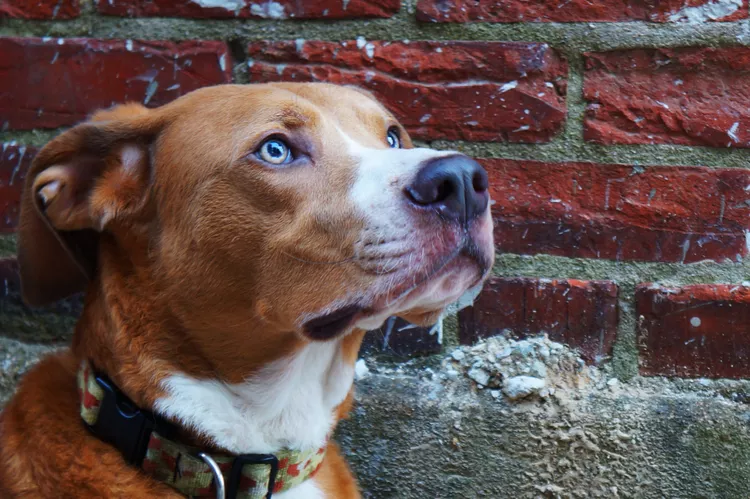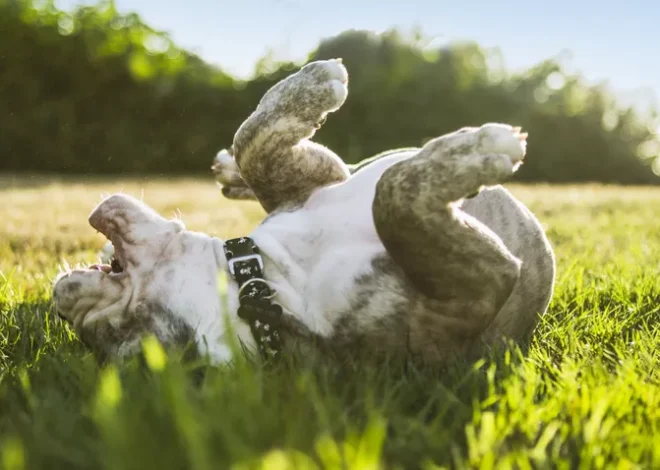
6 Reasons Why Your Dog Stares at the Wall and What It Means

Have you ever caught your furry friend gazing intently at a wall? While it might seem like a quirky or harmless habit, understanding why your dog does this can provide valuable insights into their behavior and health. Dogs communicate in subtle ways, and behaviors like wall-staring can sometimes indicate underlying issues.
In this article, we’ll explore six common reasons dogs stare at walls, when you should be concerned, and how to address this behavior.
Read Also: Why Do Dogs Rub Their Faces? Decoding This Fascinating Canine Behavior
1. They Hear Something Unusual
Dogs have incredible hearing abilities, far surpassing those of humans. If your dog stares at a specific wall, they may be responding to sounds you cannot hear, such as rodents scurrying inside or insects moving within the walls. Pay attention to their body language—ears pricked or tilting their head are telltale signs they are listening intently.
If this behavior occurs frequently, consider investigating for potential pest issues in your home.
2. They See Something You Don’t
Dogs are highly observant and can notice things that often escape the human eye. Reflections, shadows, or small movements, like a crawling insect, can capture their attention. If your dog is fixated on a wall, try observing their line of sight to identify the object of their fascination.
Read Also: Decoding Canine Communication: What Your Dog’s Ear Positions Reveal About Their Emotions
3. Canine Cognitive Dysfunction (CCD)
As dogs age, they may develop a condition known as canine cognitive dysfunction, similar to dementia in humans. Symptoms of CCD include confusion, barking without reason, changes in housebreaking habits, and wall-staring. These behaviors result from changes in brain function as dogs grow older.
If you suspect CCD, consult your veterinarian. They may recommend dietary supplements or specialized food designed to support cognitive health. Early intervention can improve your dog’s quality of life.
4. Seizures or Neurological Issues
Not all seizures involve dramatic shaking or collapse. Some seizures, like focal or partial seizures, are more subtle and may cause a dog to appear frozen, staring into space. If this occurs near a wall, it may seem like they are staring at it.
Seizures can stem from various causes, including toxins, epilepsy, or underlying medical conditions. If your dog exhibits seizure-like behavior, especially for extended periods, seek immediate veterinary care.
Read Also: The Fascinating Science Behind Canine Belly Rubs
5. Compulsive Behaviors
Sometimes, staring at a wall becomes a compulsive habit, similar to behaviors like paw-licking, circling, or barking. Compulsive behaviors are often rooted in anxiety, boredom, or even genetic predisposition.
Although wall-staring is typically harmless, addressing the root cause—whether through increased mental stimulation, physical exercise, or anxiety management—can help break the habit.
6. Attention-Seeking Behavior
Dogs are clever creatures and may develop unique ways to grab your attention. If your dog has previously received treats, praise, or interaction while staring at a wall, they might repeat the behavior to recreate that reward. For instance, if you use an automatic treat dispenser near a wall, your dog could associate the wall with treats.
To prevent reinforcing this habit, vary the locations where treats are dispensed and avoid reacting to wall-staring behavior.
Read Also: 10 Things People Do That Dogs Can’t Stand
When to Consult a Veterinarian
If you suspect your dog’s wall-staring stems from a medical issue, it’s crucial to consult a veterinarian promptly. Conditions like CCD, seizures, or even vision and hearing impairments may require professional diagnosis and treatment.
Pro Tip: Keep a behavior diary to share with your vet, noting when the staring occurs, duration, and any accompanying behaviors.
How to Address Wall-Staring Behavior
- Investigate Possible Triggers: Look for pests, unusual sounds, or objects that could be capturing your dog’s attention.
- Enhance Their Environment: Provide interactive toys or puzzle feeders to keep their mind engaged.
- Consult Experts: If the behavior persists, seek advice from a veterinarian or professional dog trainer.
Read Also: Top Products to Keep Your Dog Happy and Healthy: Insights from a Professional Trainer
Final Thoughts
Wall-staring in dogs can range from harmless curiosity to a sign of a deeper issue. By observing your dog closely and understanding the potential causes, you can determine whether this behavior requires action.
For more insights into your dog’s behavior, check out our guide on Decoding Dog Lip Licking: Understanding Your Canine’s Silent Language.
Understanding your dog’s unique habits strengthens the bond you share and ensures their well-being. If you notice any unusual or concerning behavior, don’t hesitate to seek professional advice.











